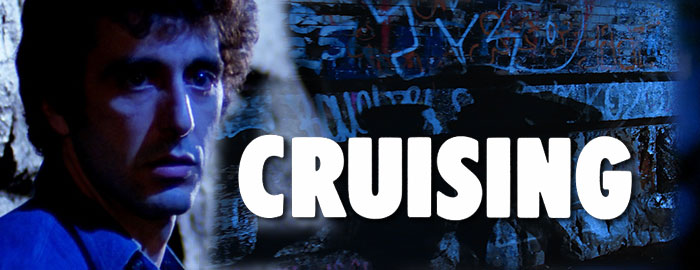
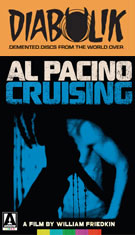

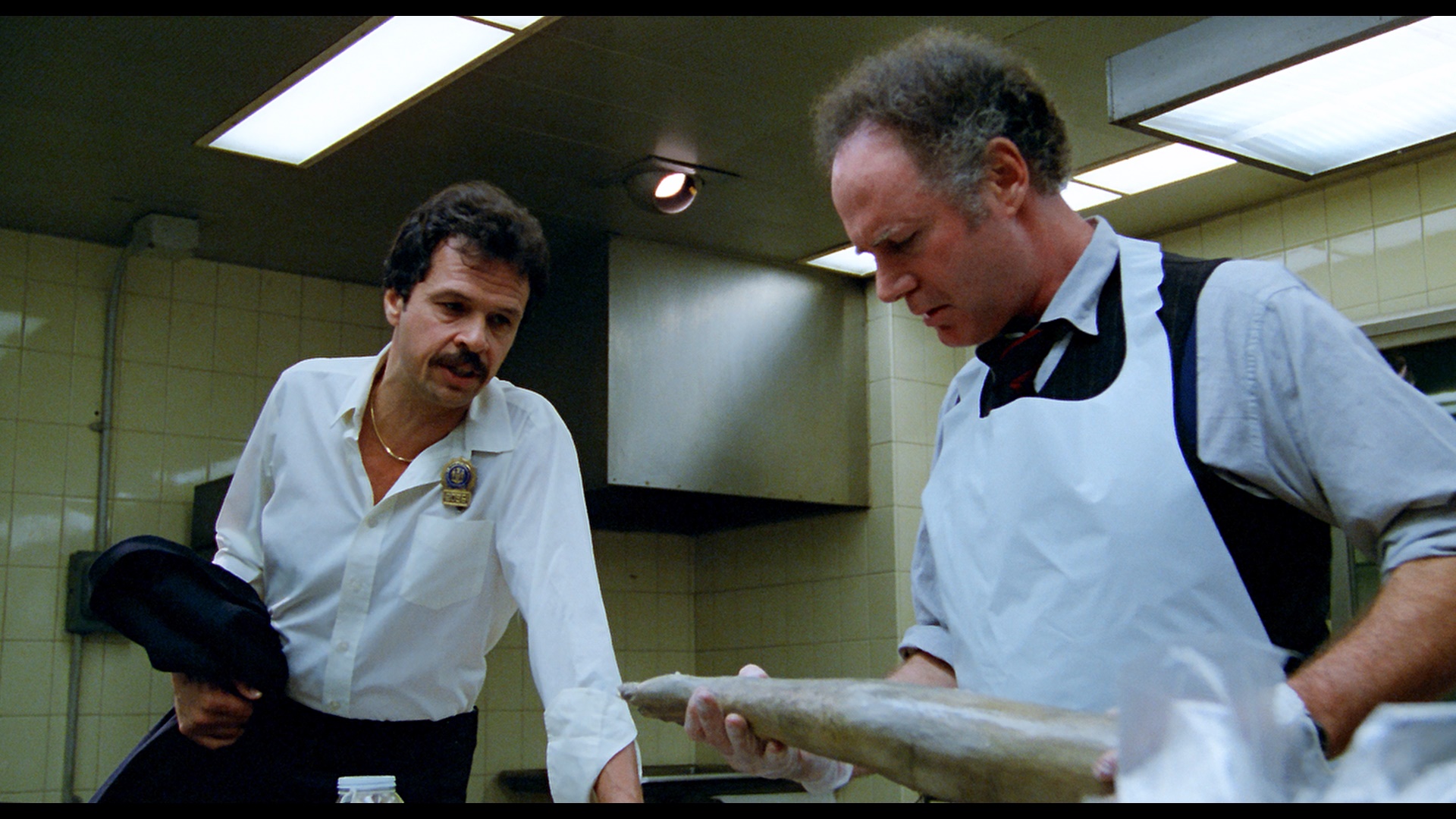 known as the decade of the
known as the decade of the 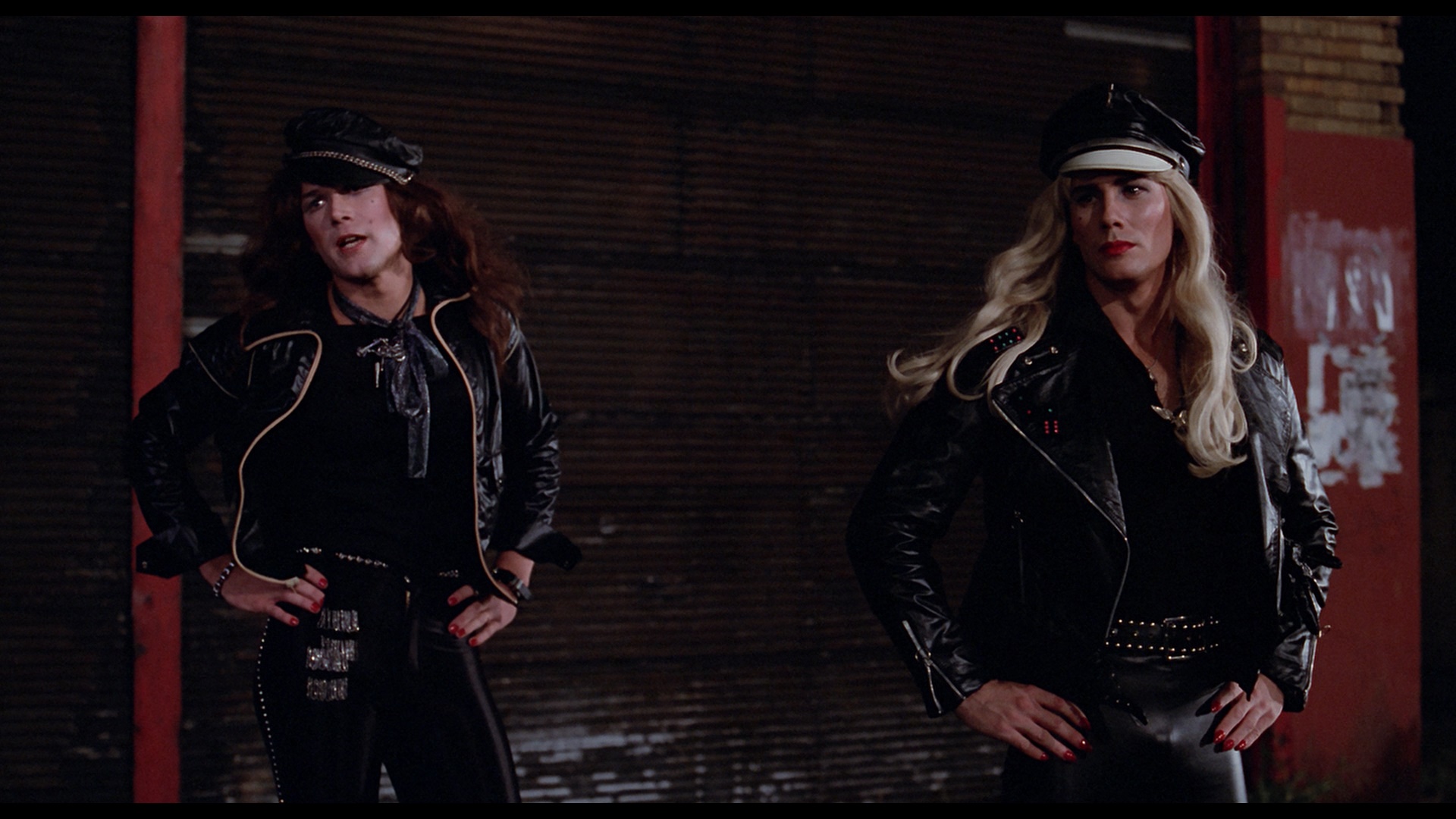 blockbuster, the 1980s started on an incredibly disturbing note with two thrillers that had the gay and lesbian community up in arms: the comparatively obscure Windows and one of the most controversial films of the decade, William Friedkin's Cruising. Beset by protests during its on-location production in New York City and legendary for its wrangling with the MPAA (including 40 minutes of graphic sex footage Friedkin added simply to give himself room to negotiate and get what he needed), the film was largely reviled upon its release but has since seen its reputation escalate considerably. Now a bona fide cult film, a compelling example of giallo-inspired American cinema, and a powerful showcase for star Al Pacino, this ambiguous and wildly rewatchable film has aged remarkably well and stands proudly in the pantheon of its creator.
blockbuster, the 1980s started on an incredibly disturbing note with two thrillers that had the gay and lesbian community up in arms: the comparatively obscure Windows and one of the most controversial films of the decade, William Friedkin's Cruising. Beset by protests during its on-location production in New York City and legendary for its wrangling with the MPAA (including 40 minutes of graphic sex footage Friedkin added simply to give himself room to negotiate and get what he needed), the film was largely reviled upon its release but has since seen its reputation escalate considerably. Now a bona fide cult film, a compelling example of giallo-inspired American cinema, and a powerful showcase for star Al Pacino, this ambiguous and wildly rewatchable film has aged remarkably well and stands proudly in the pantheon of its creator. 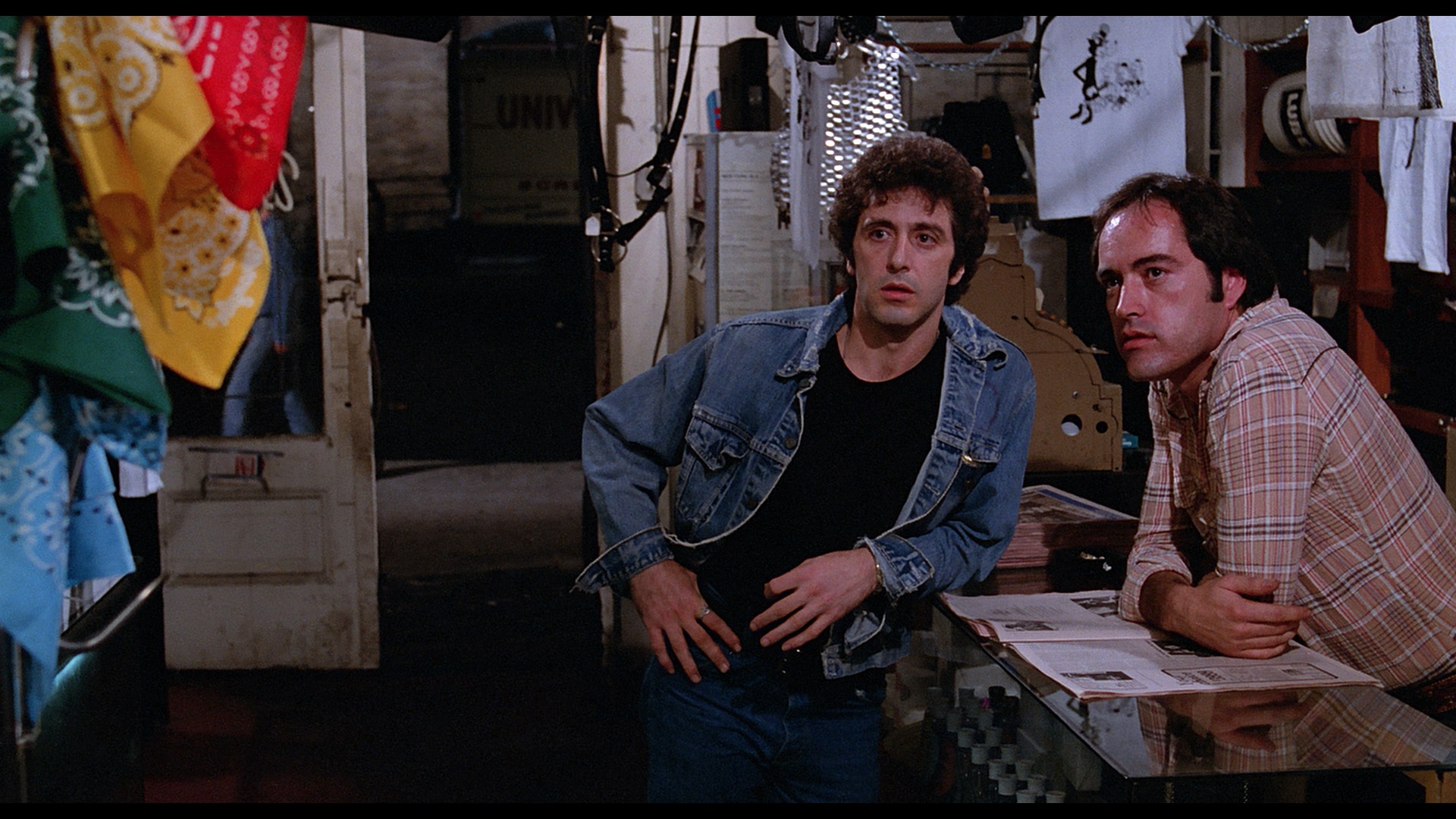 culture, but tracking
culture, but tracking 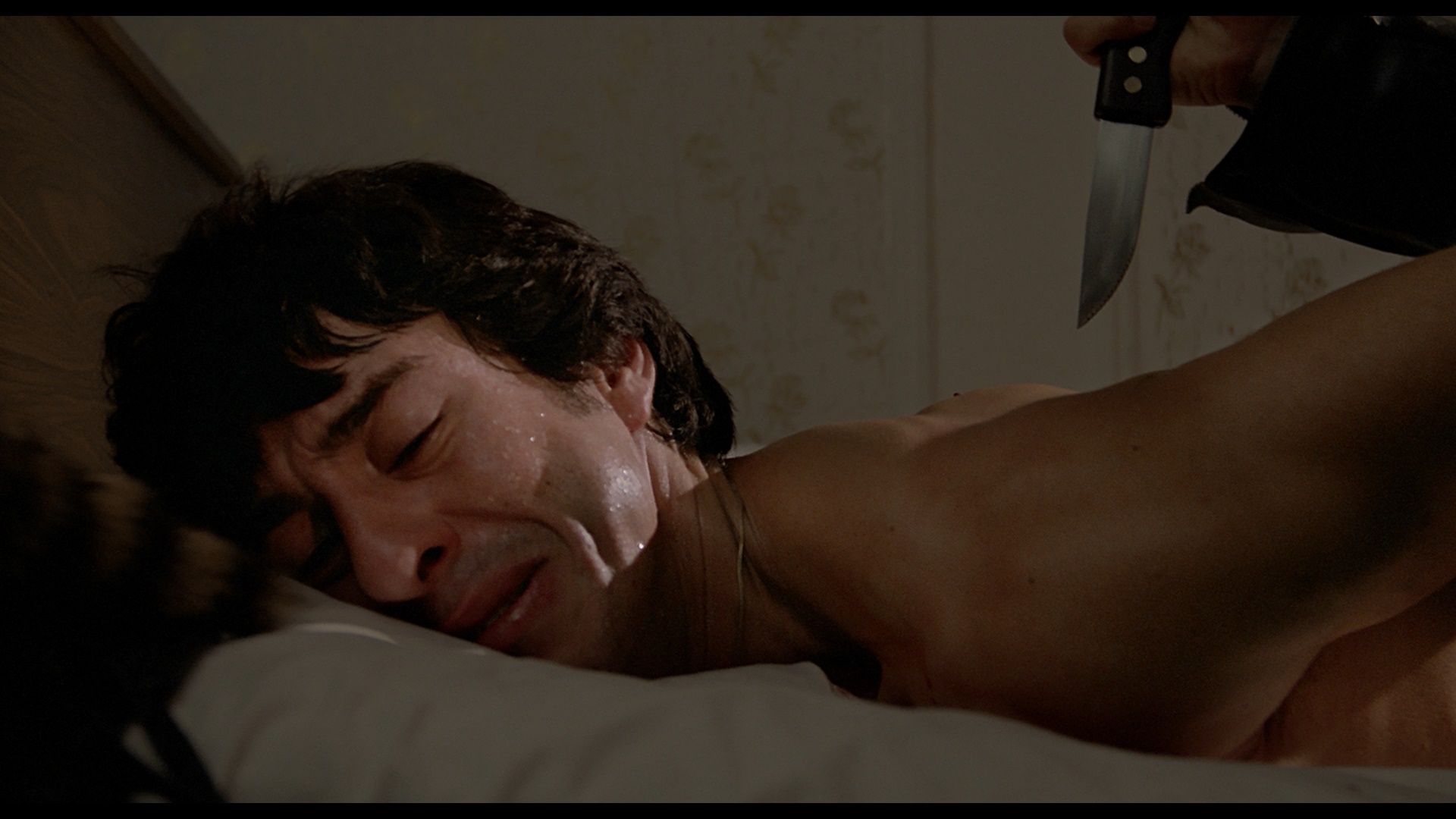 down the killer will come at a much higher cost than he could have anticipated.
down the killer will come at a much higher cost than he could have anticipated. 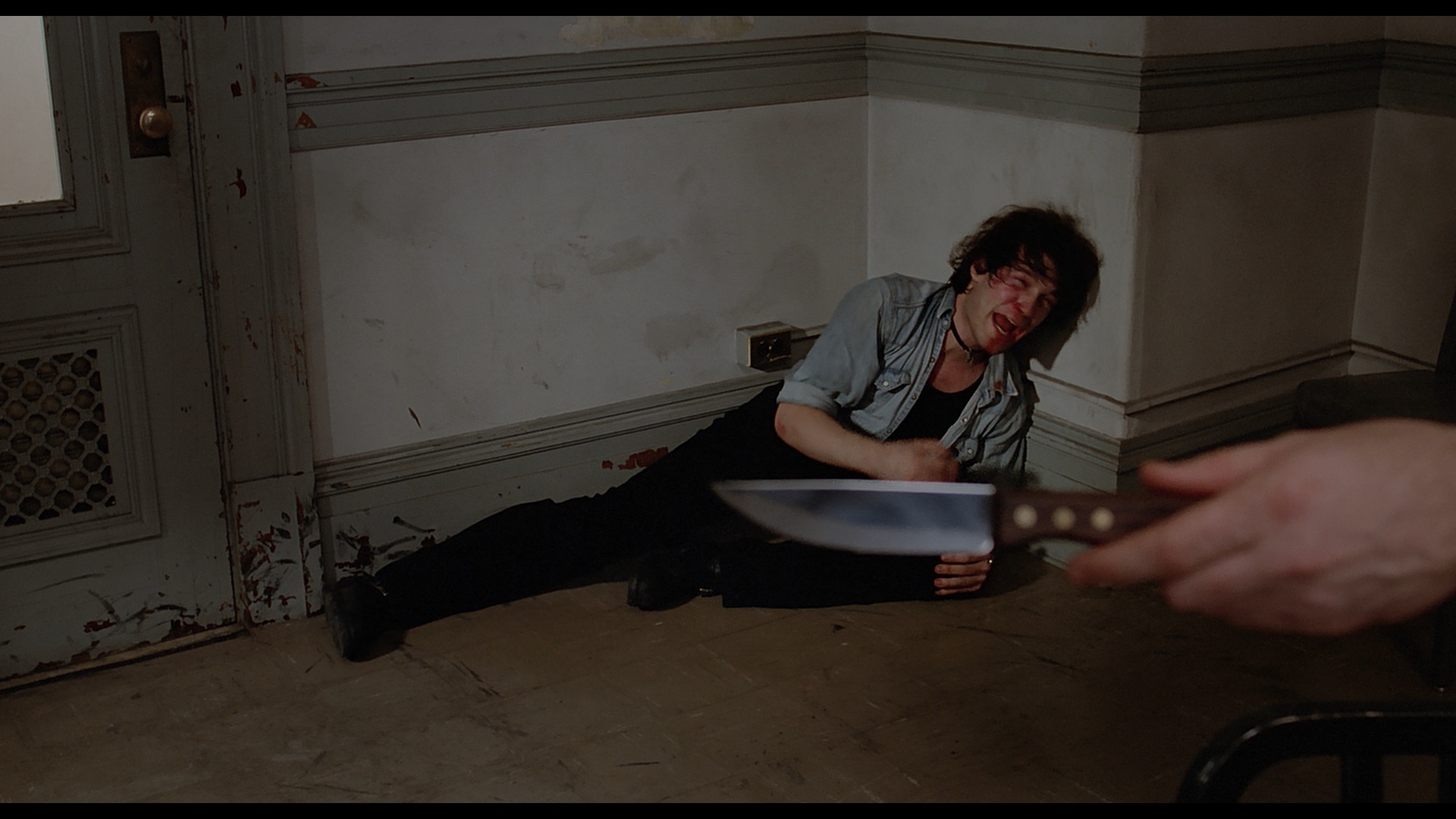 which draws all of its details from real-life crimes including Paul Bateson, the radiologist from Friedkin's The Exorcist who himself was convicted of murder in the gay kink scene and may have been a serial killer as well. The film did no favors for Friedkin's career at the time, coming off of the financial
which draws all of its details from real-life crimes including Paul Bateson, the radiologist from Friedkin's The Exorcist who himself was convicted of murder in the gay kink scene and may have been a serial killer as well. The film did no favors for Friedkin's career at the time, coming off of the financial 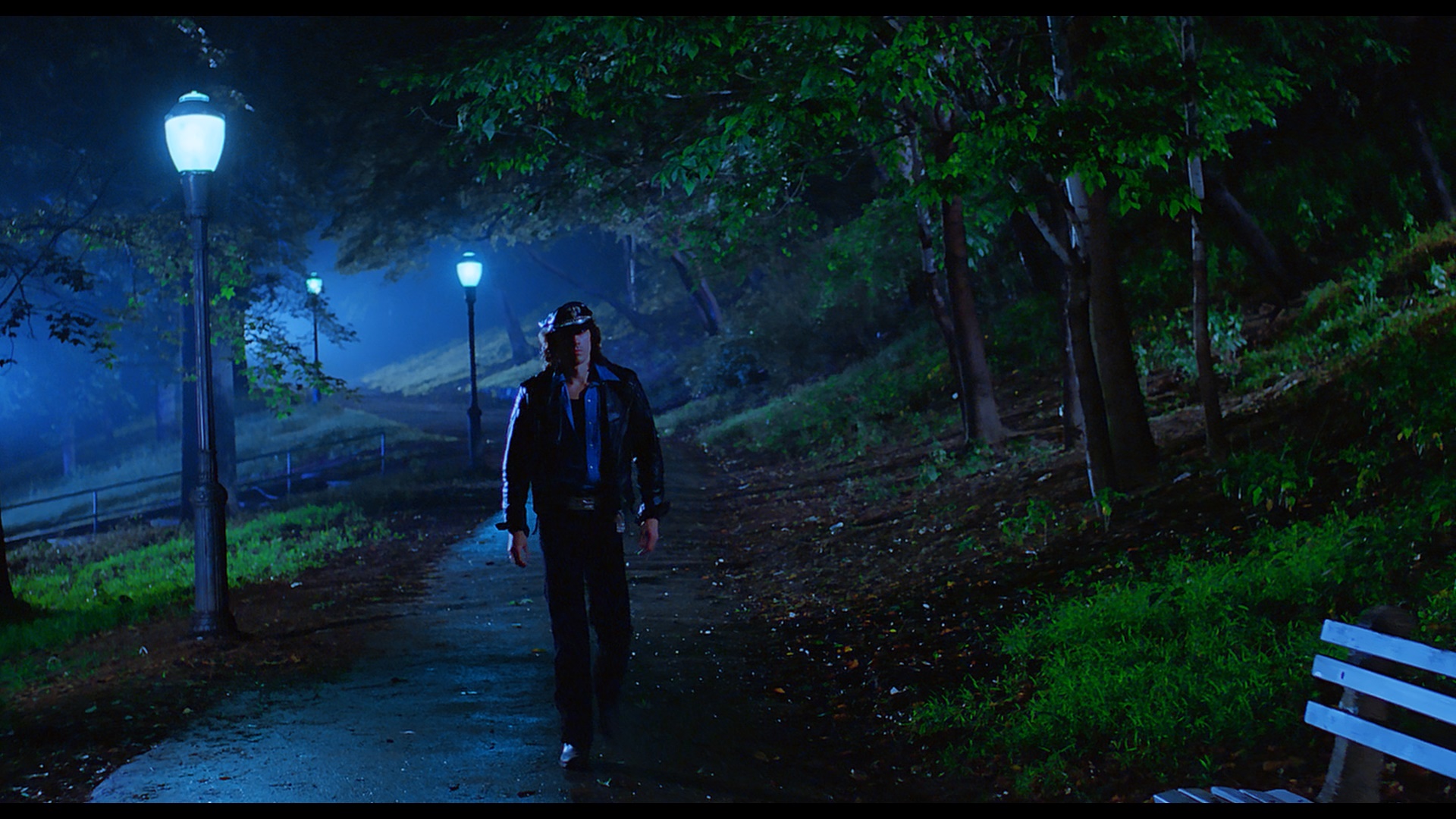 disappointments of Sorcerer and The Brink's Job; of course, all three films have since been reappraised to varying degrees and now hold up extremely well. Adding to this film's mystique is the wide variety of versions over the years, with Friedkin tweaking the MPAA by inserting fleeting, subliminal shots of hardcore-ish penetration into two of the murder scenes. At least one eagle-eyed video technician noticed and fogged the shots on the film's VHS release from CBS/Fox, though it did appear full strength on the first Magnetic Video VHS edition as well as a Hong Kong laserdisc. One of the stronger club sequences around the 38-minute mark was also cut in many prints and video editions (including the laserdisc and most tapes), though it was restored to its original length when the film was given a theatrical and DVD release by Warner Bros. in 2007. Unfortunately that version was essentially ruined by some baffling alterations including a hideous strong blue tint applied over the entire film and ridiculous digital filters applied over Pacino's frenetic, drug-induced dancing scene. The opening disclaimer was also removed and replaced with a looooong crawl of the film's title across the screen that awkwardly bled over into the opening shot. At least this marked the first correctly framed version of the film, which was shot hard matted
disappointments of Sorcerer and The Brink's Job; of course, all three films have since been reappraised to varying degrees and now hold up extremely well. Adding to this film's mystique is the wide variety of versions over the years, with Friedkin tweaking the MPAA by inserting fleeting, subliminal shots of hardcore-ish penetration into two of the murder scenes. At least one eagle-eyed video technician noticed and fogged the shots on the film's VHS release from CBS/Fox, though it did appear full strength on the first Magnetic Video VHS edition as well as a Hong Kong laserdisc. One of the stronger club sequences around the 38-minute mark was also cut in many prints and video editions (including the laserdisc and most tapes), though it was restored to its original length when the film was given a theatrical and DVD release by Warner Bros. in 2007. Unfortunately that version was essentially ruined by some baffling alterations including a hideous strong blue tint applied over the entire film and ridiculous digital filters applied over Pacino's frenetic, drug-induced dancing scene. The opening disclaimer was also removed and replaced with a looooong crawl of the film's title across the screen that awkwardly bled over into the opening shot. At least this marked the first correctly framed version of the film, which was shot hard matted  at 1.85:1. An HD version later popped up on Cinemax and various digital
at 1.85:1. An HD version later popped up on Cinemax and various digital 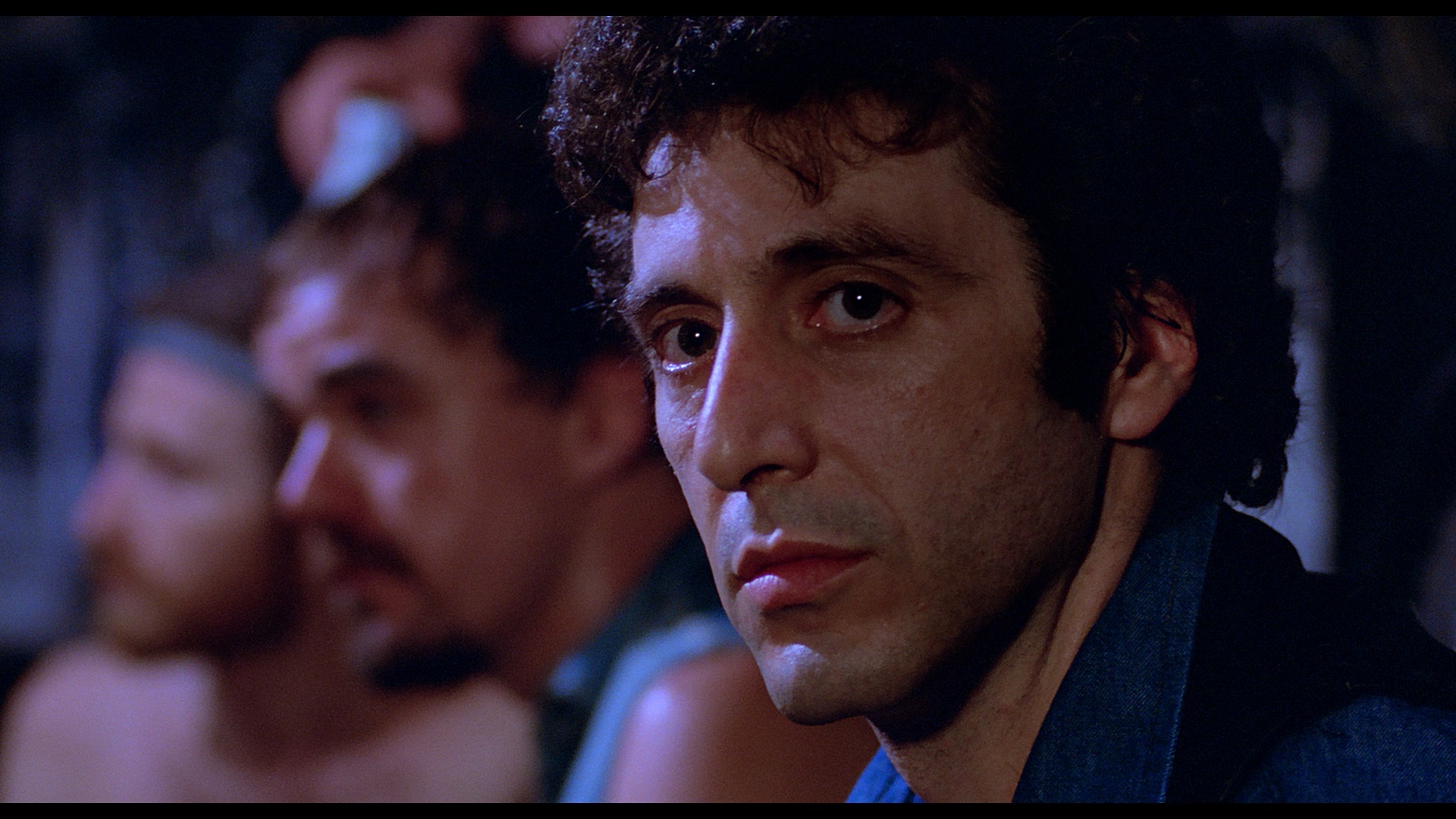 platforms, again with the irritating 2007 alterations.
platforms, again with the irritating 2007 alterations. 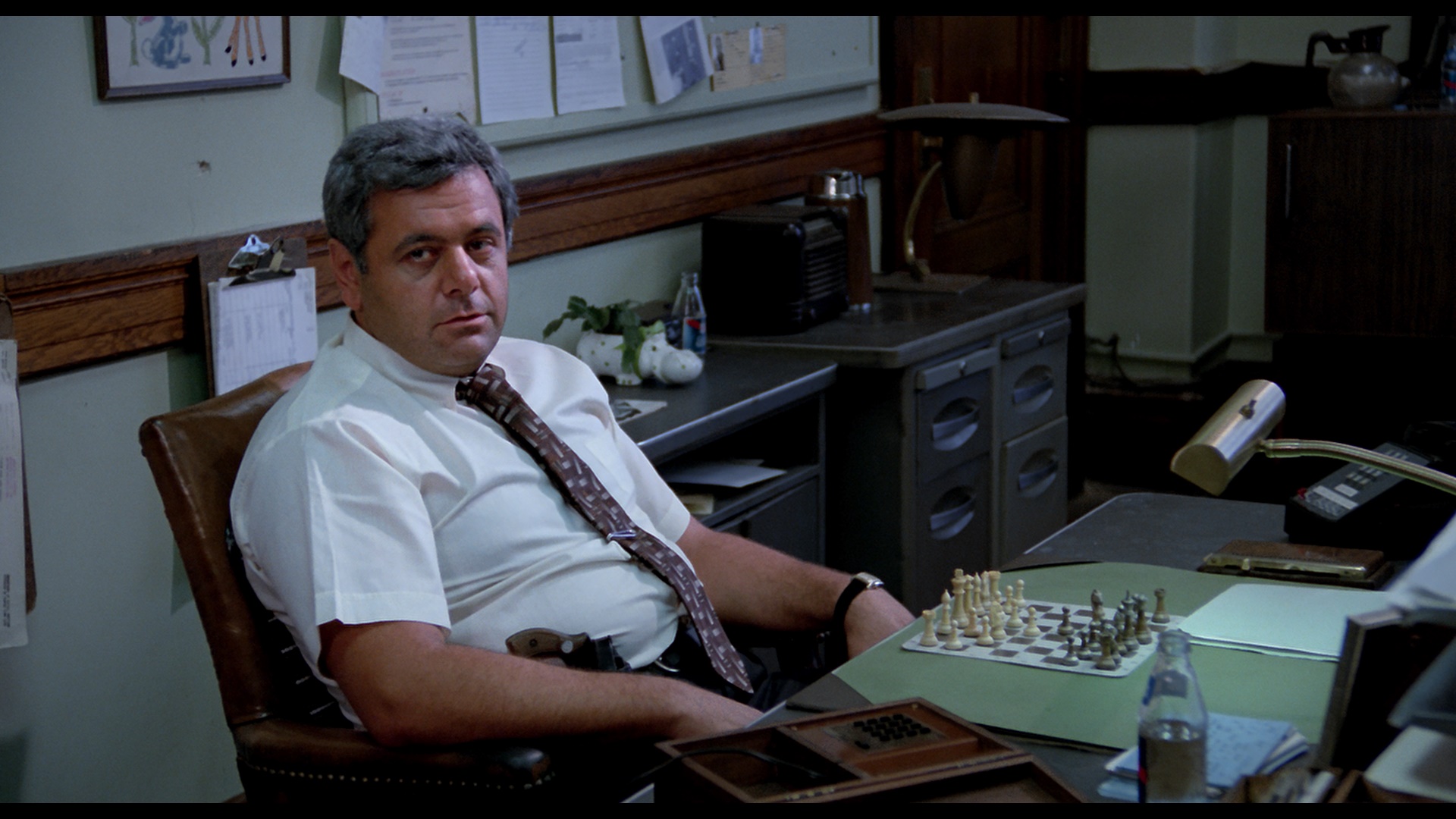 The DTS-HD MA audio options include the theatrical 2.0 stereo mix and a 5.1 mix supervised by Friedkin; the latter is subdued but effective with some of Nitzsche's score and the city sound effects nicely spread out discreetly to the front and rear channels. Optional English SDH subtitles are also provided. Ported over from the prior DVD are an audio commentary by Friedkin (mostly production-oriented and one of his stronger tracks
The DTS-HD MA audio options include the theatrical 2.0 stereo mix and a 5.1 mix supervised by Friedkin; the latter is subdued but effective with some of Nitzsche's score and the city sound effects nicely spread out discreetly to the front and rear channels. Optional English SDH subtitles are also provided. Ported over from the prior DVD are an audio commentary by Friedkin (mostly production-oriented and one of his stronger tracks 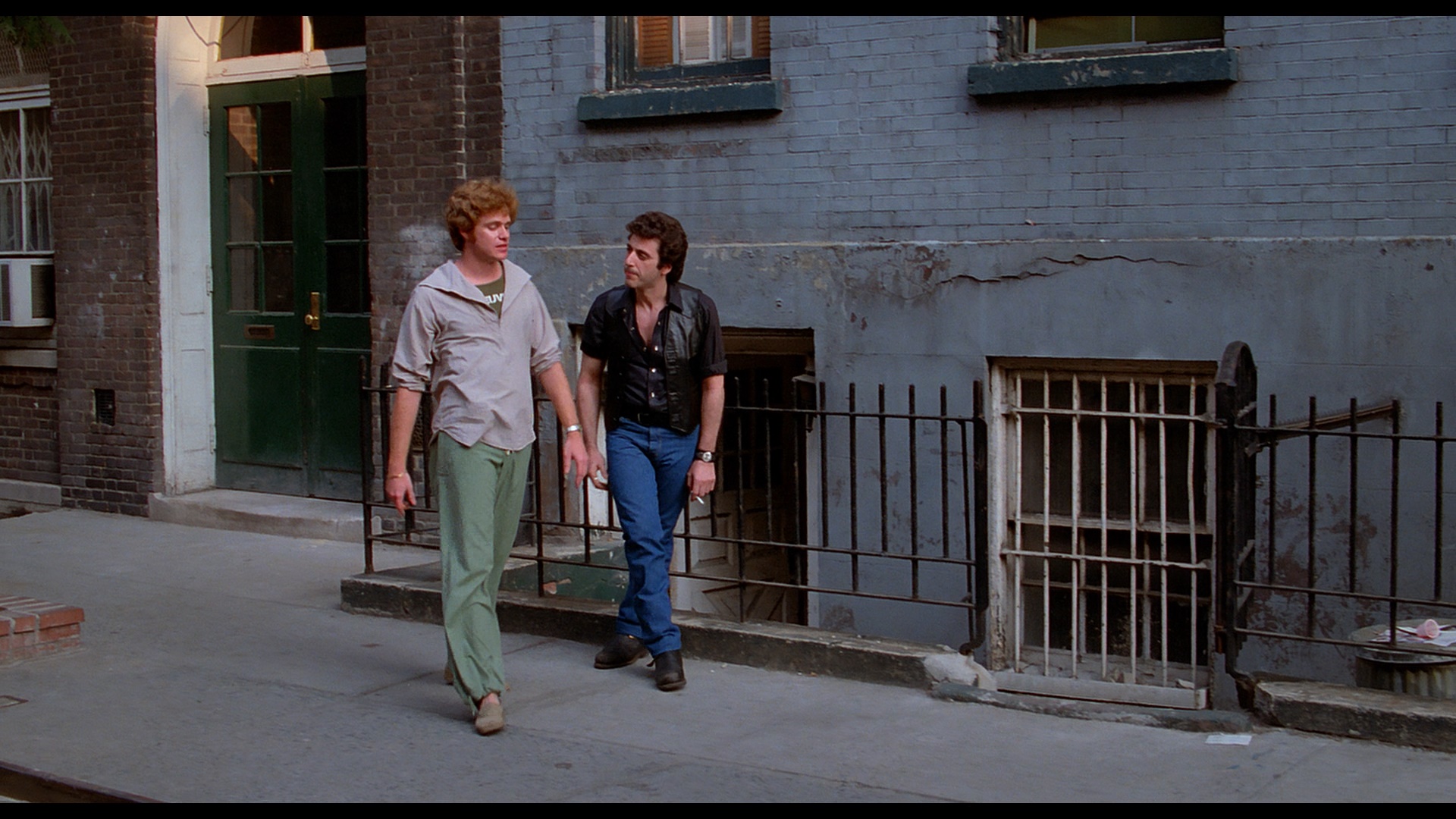 compared to the infamously absurd one he provided for The Exorcist), the trailer (now in HD and much better condition), and two Laurent Bouzereau featurettes, "The History of Cruising" (21m5) and "Exorcising Cruising" (22m31s) with Friedkin, producer Jerry Weintraub, Jurgensen, Scardino, Davis, Remar, actors Richard Cox and Jay Acovone, Sonny Grosso, James Contner, Bud Smith, Mark Johnson, and casting director Lou DiGiaimo. New to this release is an audio commentary by Friedkin and always welcome Mark Kermode, who provide a very engaging conversation about the film without overlapping very much with the prior track. They chat about everything from the original casting of Richard Gere to the ongoing protests, the censorship issues, and the amusing circumstances of James Franco and Travis Matthews' Interior. Leather Bar, an odd attempt to make a film about (but not recreating) the much-discussed missing 40 minutes from the film. It's also interesting to hear Friedkin's opinion of Pacino shift around over the course of these extras given the 12-year time gap, with the director either chiding his lack of preparation or praising the quality of innocence and discomfort he brought to the role. Either way, it's an important and endlessly absorbing film finally given its due and still one of the most transgressive films in mainstream American history.
compared to the infamously absurd one he provided for The Exorcist), the trailer (now in HD and much better condition), and two Laurent Bouzereau featurettes, "The History of Cruising" (21m5) and "Exorcising Cruising" (22m31s) with Friedkin, producer Jerry Weintraub, Jurgensen, Scardino, Davis, Remar, actors Richard Cox and Jay Acovone, Sonny Grosso, James Contner, Bud Smith, Mark Johnson, and casting director Lou DiGiaimo. New to this release is an audio commentary by Friedkin and always welcome Mark Kermode, who provide a very engaging conversation about the film without overlapping very much with the prior track. They chat about everything from the original casting of Richard Gere to the ongoing protests, the censorship issues, and the amusing circumstances of James Franco and Travis Matthews' Interior. Leather Bar, an odd attempt to make a film about (but not recreating) the much-discussed missing 40 minutes from the film. It's also interesting to hear Friedkin's opinion of Pacino shift around over the course of these extras given the 12-year time gap, with the director either chiding his lack of preparation or praising the quality of innocence and discomfort he brought to the role. Either way, it's an important and endlessly absorbing film finally given its due and still one of the most transgressive films in mainstream American history.
![]()